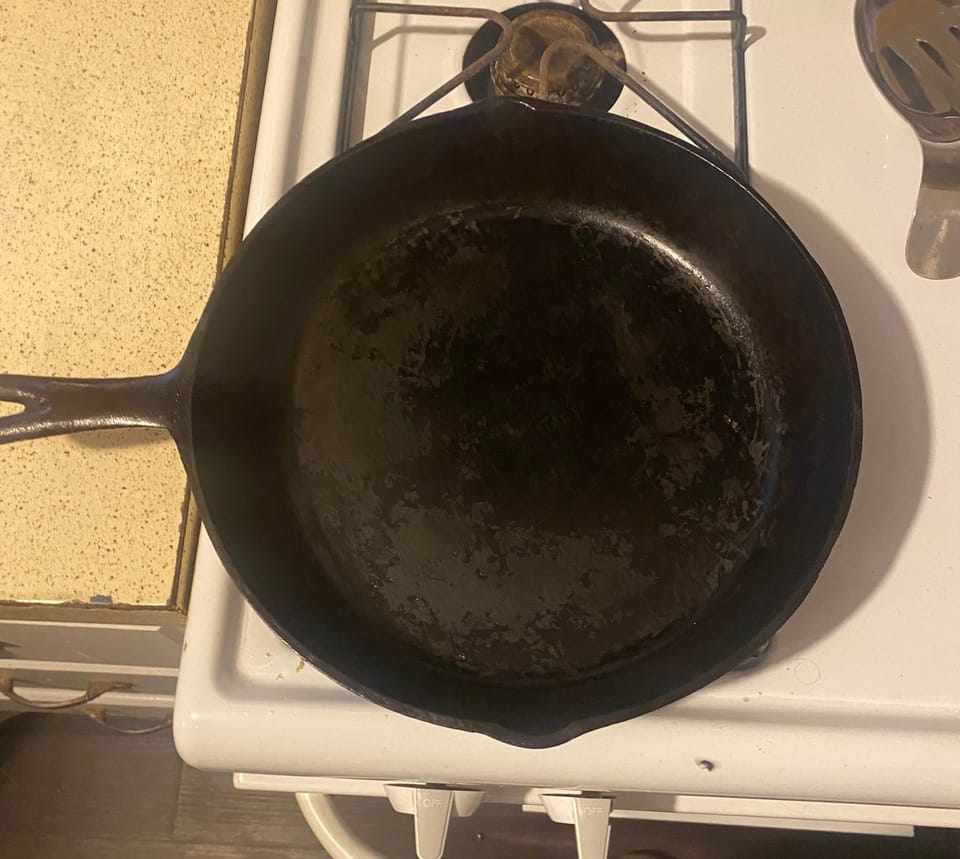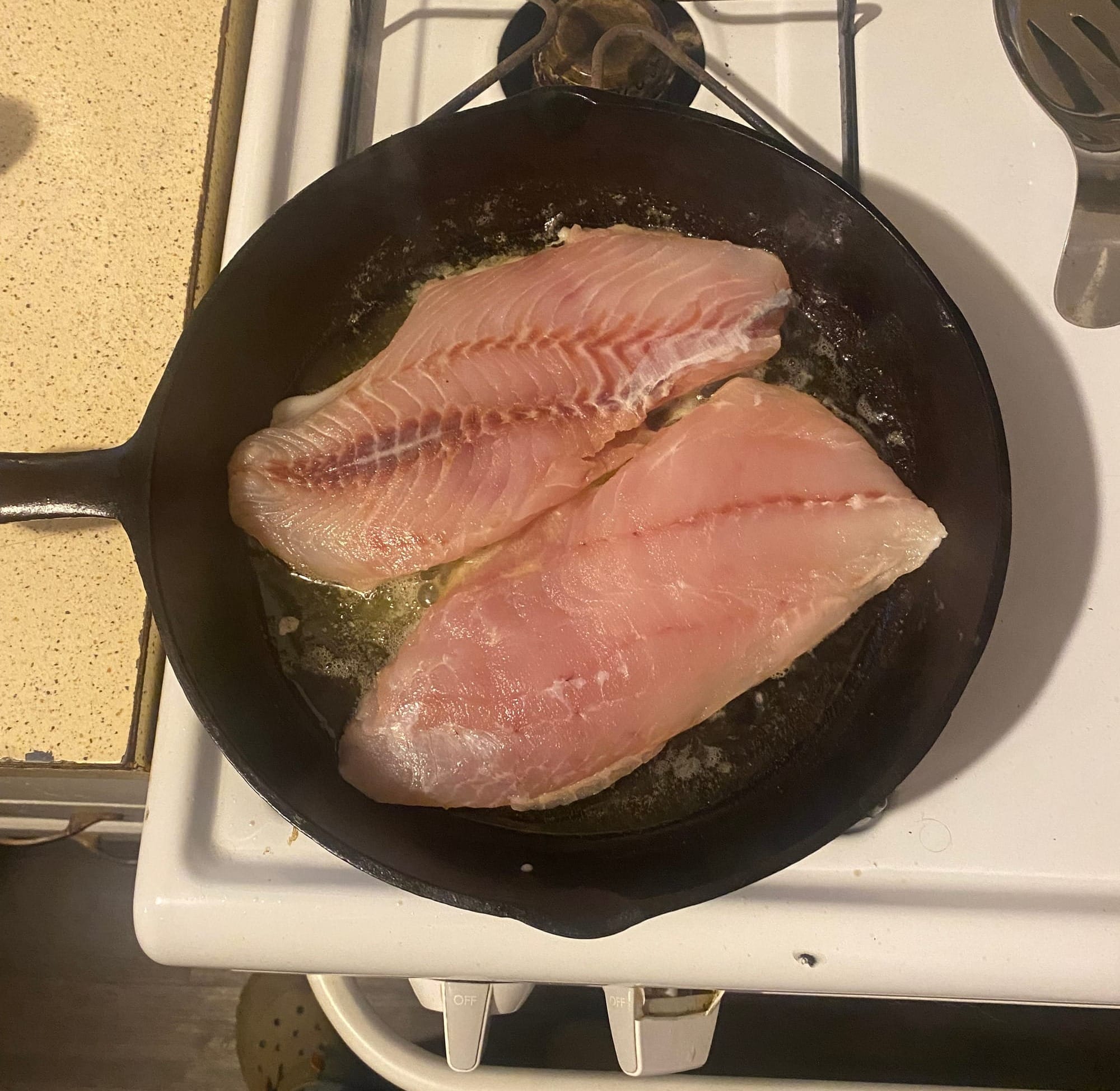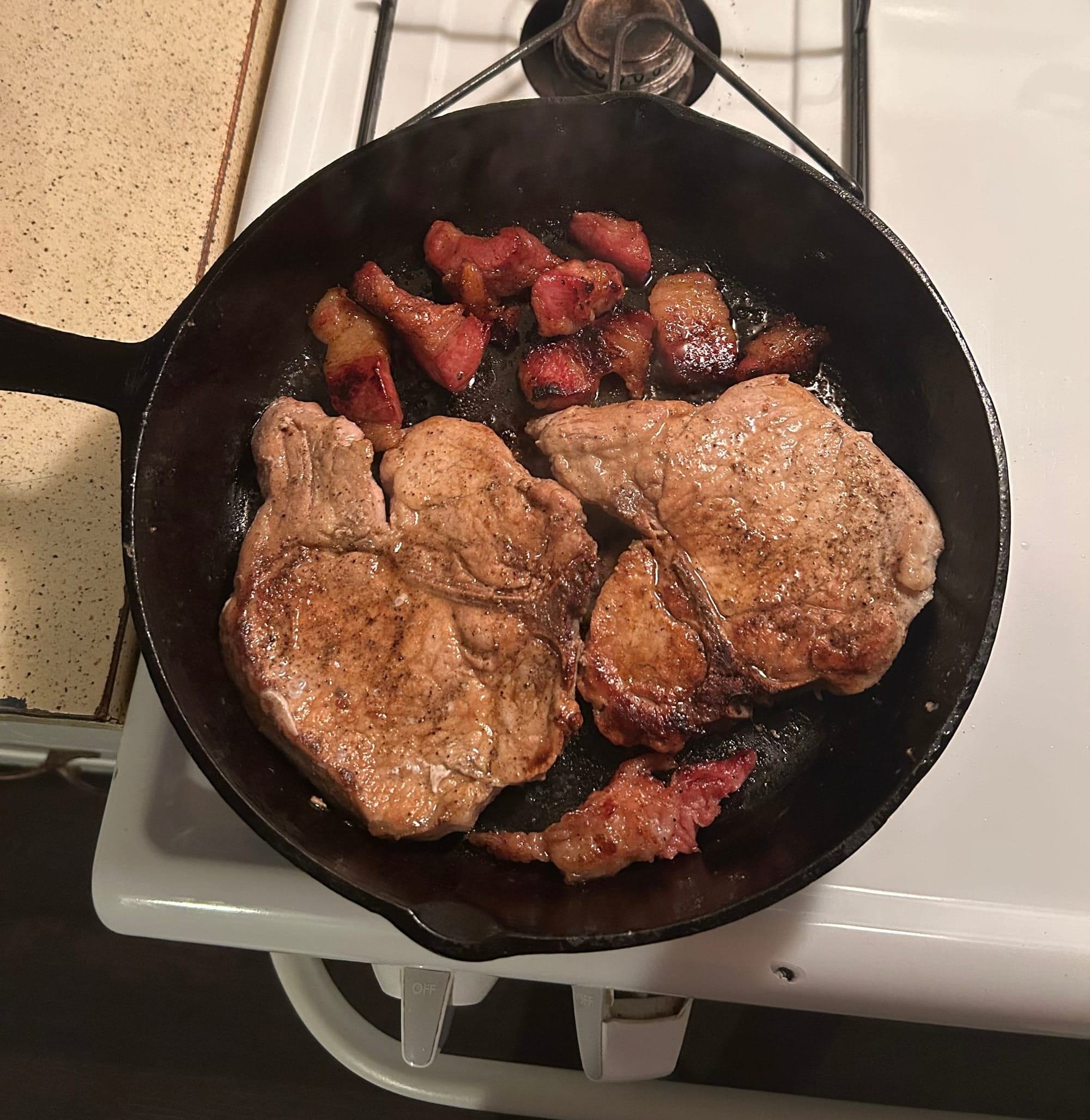Cast Iron

When I first moved to Auburn for college, my parents and grandmother made sure I had all the basic necessities a freshman might need to survive the school year. There was just one thing I was missing: a good cast iron skillet. I took it upon myself to acquire one, and a Lodge skillet from Walmart was just within my price range. That Lodge cooked almost every meal I made for the next four years. It went with me on countless duck hunts as close as Lake Eufaula and Apalachicola and as far as Arkansas and North Dakota. It traveled with me while I worked on the road in South Georgia and East Texas. It's even been to New York City. Now, it’s in semi-retirement and is only taken on the most treacherous of excursions—situations where I wouldn’t risk taking my good skillet.
My "good" skillet is likely over 70 years old, recently rescued from the hunting camp. It belonged to my father’s mother. After an acid bath to remove rust and new seasoning, it’s back in commission.
The cast iron skillet is a culinary staple that seems to be making a comeback in recent years, as evidenced by rising prices in antique stores. Cast iron cookware dates back to before Jesus' time but became widely used in Europe during the 16th century. As more households began to cook on stovetops, cast iron usage increased as well, all the way up to the mid-1900s. Then, as new cookware materials came out and manufacturing processes advanced, many households shifted to stainless steel, aluminum, or non-stick options.
What else lasts more than a generation or two? Firearms, jewelry, and land are about all I can think of. Cast iron, with proper care, can last forever and can be handed down to the next generation. The only way to permanently damage it is to drop it on a hard floor—and even then, it’s more likely to crack your tile than the pan. They're great for just about any kind of camping except for backpack camping. You can cook with cast iron anywhere, even directly on a bed of coals, without worrying about damaging it. Caution should be used on glass stove tops however; you wouldn't want to scratch the glass. Though cast iron takes a bit longer to heat up, it holds heat longer and distributes it more evenly. Be sure to heat cast iron slowly to ensure the entire pan gets hot, not just the center.
One reason for the rebounding popularity of cast iron is concern over the safety of non-stick pans. I have no idea if nonstick stuff is actually bad for you, but I don't want to find out. Additionally, cast iron is said to help maintain healthy iron levels in your blood.
Not all cast iron is made equal. Rare brands like Wagner and Griswold go for high dollar on eBay, but there’s no requirement for that level of investment. Cast iron is available for any budget. What’s really worth noting is the finish—older skillets are often smoother, while many modern ones have a rougher surface. It may be worthwhile to seek out an older, slick skillet, but they all get the job done. Don’t get too bogged down with the specifics. Just find one you like and start cooking with it.

